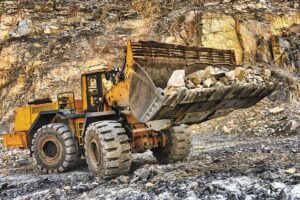
Zelenskyy has rebuffed US’s initial attempt to take control of minerals as downpayment for its aid in war with Russia
Ukraine’s president, Volodymyr Zelenskyy, has rebuffed an initial attempt by the US to corner his country’s critical minerals as a downpayment for continued military and economic aid for its war with Russia.
Three sources told the Reuters news agency that the US had proposed taking ownership of 50% of Ukraine’s critical minerals. Zelenskyy did not dismiss the offer out of hand, but said it did not yet contain the security provisions Kyiv needed.
Critical minerals are the metals and other raw materials needed for the production of hi-tech products, particularly those associated with the green energy transition, but also consumer electronics, artificial intelligence infrastructure and weapons.
The rush to tackle climate breakdown and move away from fossil fuels has triggered a rush for energy transition minerals such as cobalt, copper, lithium and nickel, which are useful for electrification of transport and the construction of wind turbines. The same minerals and others are also used for the manufacture of mobile phones, AI datacentres and arms such as F-35 fighter aircraft, placing them in high demand.
As the world’s economy and technology transforms, the value of critical minerals has soared and geopolitical competition for access to them is rising. In 2023, the International Energy Agency (IEA) estimated that the market for energy transition minerals had reached £320bn in 2022, double its value five years earlier. And if countries fully implement their clean energy and climate pledges, demand is expected to more than double by 2030 and triple by 2040, the agency says.
The term critical minerals is not a scientific term so much as a political term, and different countries have different lists of critical minerals depending on their domestic and geopolitical objectives.
In 2022, the US Geological Survey (USGS) published a list of 50 minerals, from aluminium to zirconium, that it regarded as “play[ing] a significant role in our national security, economy, renewable energy development and infrastructure”. Notable inclusions were arsenic, for semiconductors; beryllium, used as an alloying agent in aerospace and defence industries; cobalt, lithium and graphite, crucial for manufacturing batteries; indium, which makes screens respond to a finger touch; and tellurium, which is used for solar power generation.
The US’s Energy Act stipulates that the list must be updated every three years, which means this year it will be up for review, and it will be interesting to see which minerals appear or disappear given the new political environment in the country.
Rare earth elements (REEs) are a subset of 17 critical minerals that are variously indispensable for mobile phones, electric vehicles, missile guidance systems and other electronics, industrial and energy applications.
Despite their name, most of the rare earth elements are not particularly rare, but their extraction and refining is fiendishly difficult – and environmentally highly destructive – meaning production is concentrated in very few places, mainly China.
REEs include europium, used in nuclear power station control rods; dysprosium, gandolinium and praseodymium, used in the magnets in your mobile phone; and gadolinium, holmium and ytterbium, used in lasers among other things.
A 2022 article by the chair of Ukraine’s Association of Geologists, Hanna Liventseva, claimed her country contained about 5% of the world’s mineral resources, despite covering only 0.4% of the globe’s surface, thanks to a complex geology that takes in all three of the main components of the earth’s crust.
According to Ukraine’s own data, cited by Reuters, the country has deposits of 22 of the 34 minerals identified as critical by the EU, including rare earths such as lanthanum, cerium, neodymium, erbium and yttrium.
Before the outbreak of war with Russia, Ukraine was a key supplier of titanium, producing about 7% of global output in 2019, according to European Commission research. It also claimed 500,000 tons of lithium reserves, and one-fifth of the world’s graphite, a crucial component of nuclear power stations.
However, with Russia controlling about one-fifth of Ukraine’s territory, much of these reserves have been lost. According to estimates by Ukrainian thinktanks cited by Reuters, up to 40% of Ukraine’s metal resources are under occupation. Russian troops also occupy at least two of Ukraine’s lithium deposits, one in Donetsk and another in Zaporizhzhia.
There is one big reason Trump is so keen to get his hands on Ukraine’s critical minerals: China. More than ever, the Asian superpower is the world’s factory and that means, wherever in the world critical minerals are torn from the ground, it remains a crucial staging point on the supply chain.
Most of the world’s processing capacity for critical minerals is in China. According to the IEA, China’s share of refining is about 35% for nickel, 50-70% for lithium and cobalt, and nearly 90% for REEs. Its dominance in the latter, especially, is overwhelming. According to USGS data, in 2024 China accounted for almost half the world’s REE reserves.
With Trump effectively instigating a trade war with China with his imposition of steep tariffs on Chinese goods, US access to critical minerals is potentially under threat. As mentioned earlier, the world is being gripped by an unseemly scramble for mineral wealth. They are the building blocks of the economy of the future, and if the US doesn’t get its hands on them, someone else will.
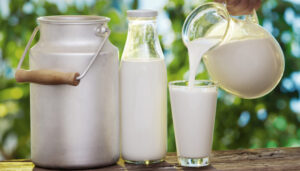
In January, Ukraine increased imports of dairy products by 55% compared to the same period last year, Infagro news agency reported.
“The market of fresh dairy products began to revive in February. Sales growth is rather slow, there is no positive dynamics that was observed in the same period of previous years. In February, prices began to stabilize, but unfortunately, by this time they had already reached a very high level,” analysts said.
Experts suggested that in order to stimulate sales, it would be right to reduce prices, especially for sour cream and cottage cheese. Therefore, the major players will try to resort to promotional sales with significant price reductions more often in the near future. In any case, there should definitely be no further price increases, they believe.
“Domestic producers should already be concerned about a significant increase in imports of fresh dairy products. In January, they were imported by 55% more than in the same period last year. And if earlier Ukraine mainly imported yogurt and various cheese products, in January several hundred tons of cheap Polish milk were imported. Polish imports of fresh dairy products accounted for 60% of the total volume,” the industry publication emphasized.
Exports of fresh dairy products are also growing, but not at the same rate as imports. The main export market for Ukrainian fresh dairy products remains Moldova, 88%, Infagro summarized.
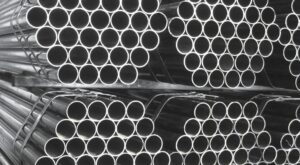
Centravis Production Ukraine, a part of Centravis Ltd. holding, is completing the development of a line of pipes made of duplex and super-duplex steel with increased corrosion resistance as part of its research and development division Centravis R&D and plans to offer them to the market in the third quarter of 2025.
“Centravis R&D is finalizing the development of a line of duplex and super duplex steel (Duplex and Super Duplex) designed for superior corrosion resistance and performance characteristics that exceed industry standards. After specialized internal processing, these advanced alloys will offer unparalleled durability for demanding applications,” the first issue of Centravis Seamless Continuity 2025, which highlights the company’s achievements, said.
It is reported that despite the challenging market environment, Centravis achieved double-digit sales growth, exceeding 14 thousand tons in total sales. The company continues to strengthen its leadership in key areas, in particular in the segments of automotive and tool pipes, nuclear energy pipes, and hollow bars. At the same time, Centravis is expanding its product portfolio with solutions for hydrogen and high-pressure applications, developing new nickel alloys for harsh environments, and introducing Balev® steel, an innovative alternative to standard grades.
During the year, Centravis expanded its global presence to 40 countries, including Bosnia and Herzegovina, Denmark, Lithuania, Luxembourg, Sweden, Kuwait and Singapore among the new export destinations.
It is noted that the company prioritizes markets with high growth potential, in particular in North America, Asia Pacific and the Middle East.
It is also reported that Centravis, together with a neighboring production facility, has created an additional power supply line to increase the energy resilience of the enterprise.
“In addition, we have invested in protective structures for electrical transformers, ensuring that they can withstand potential attacks on energy infrastructure,” the company reports on the measures taken to ensure continuous production.
It is also stated that in December 2024, the company received 926 tons of billets from seven suppliers from Ukraine, Europe and Asia as part of the supply of billets and material support. An order has also been placed for additional pipe billets to replenish stocks of alloy 625.
In terms of logistics, the company notes that transit time for deliveries to Europe remains stable. Thus, deliveries to unloading points in Germany usually take up to one week, the maximum delivery time to the final unloading point remains at 10 days, and the same timeframe applies to most destinations in Western Europe.
In addition, the company cooperates with specialized carriers for oversized pipes up to 25 m in length, which allows it to offer more competitive prices and customized logistics solutions.
At the same time, Centravis uses sea freight transportation, continuing to use various European ports.
“In urgent situations, we can use air transportation to any European airport. We also continue our special initiative “Germany and Italy”. The Fast Lane program is designed to ensure that customers receive the steel products they need faster than ever before. This service optimizes production and delivery schedules, providing faster turnaround times for urgent projects in Germany and Italy,” the statement said.
As reported, Centravis increased its production of seamless stainless steel pipes by 12.6% in 2024 compared to 2023, up to 13.7 thousand tons. Centravis exported almost all of its products.
The company plans to increase production to 15 thousand tons in 2025.
“Founded in 2000, Centravis is one of the ten largest producers of seamless stainless steel pipes in the world. Its main production facilities are located in Nikopol (Dnipropetrovska oblast). In 2023, the company opened a branch in Uzhhorod.
Centravis Holding Ltd. was established on the basis of Nikopol Stainless Pipe Plant CJSC, service and trading companies of Production and Commercial Enterprise YUVIS LLC. Its shareholders are members of the Atanasov family. Centravis Ltd. owns 100% of the shares in Centravis Production Ukraine.
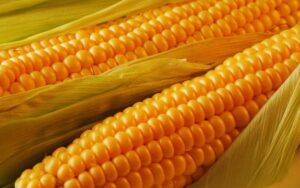
The western cluster of Agro-Region agroholding will increase the area under corn by 61% in the 2025 production season compared to last year, to 3.5 thou hectares, which will be 36% of the unit’s land area, its press service reports.
The cluster’s head Yuriy Stepanchuk noted that winter wheat is expected to increase by 7% to 1.6 thou hectares (17% of the cluster’s total land bank), while winter rapeseed will be planted on 1.5 thou hectares (16%), up 9% from last year. The agroholding plans to reduce soybean plantings to 1.6 thou hectares (17%) and sunflower to 1.4 thou hectares (14%), which is 43% and 45% less than last year, respectively.
“The saturation of oilseeds in the past years, changes in agricultural prices and export opportunities return the company to the traditional structure of sown areas, which will allow us to effectively use crop rotation, available technical and human resources,” the cluster head emphasized.
Agro-Region owns a land bank of 39 thousand hectares in Kyiv, Chernihiv, Zhytomyr and Khmelnytsky regions. It specializes in crop production. It consists of 11 companies organized into four crop production clusters. It has two elevators: Boryspil with a capacity of 73 thousand tons and Myropil with a capacity of 52 thousand tons.
Agro-Region’s annual harvest of grains and oilseeds is up to 200 thousand tons.
In April 2021, the Swedish company Lobiu Sala AB, owned by the former Minister of Economy of Ukraine Aivaras Abromavičius, received permission from the Antimonopoly Committee of Ukraine to buy the Swedish Agro Region Stockholm Holding, which manages the Agro-Region group of companies in Ukraine.
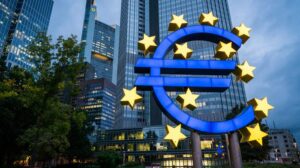
The eurozone’s GDP in the fourth quarter of 2024 increased by 0.1% compared to the previous three months, according to a report by the European Union’s statistical office, which presented revised data. Previously, it was reported that GDP remained unchanged. Experts on average expected the previous estimate to be confirmed, according to Trading Economics.
In annual terms, the eurozone economy grew by 0.9%, the fastest pace since the beginning of 2023. The dynamics of this indicator coincided with the previous estimate and the consensus forecast of analysts.
In the third quarter, eurozone GDP increased by 0.4% compared to the previous three months and by 0.9% in annual terms.
In October-December, Germany’s economy declined by 0.2% quarter-on-quarter, France’s by 0.1%, Spain’s by 0.8%, and Italy’s GDP remained unchanged.
In annual terms, Germany’s GDP also decreased by 0.2%, France’s by 0.7%, Spain’s by 3.5%, and Italy’s by 0.5%.
In the fourth quarter, the EU economy grew by 0.2% compared to the previous three months and by 1.1% in annual terms.
This is the second estimate of GDP dynamics for the fourth quarter out of three. The third estimate will be published on March 7. According to preliminary data, in 2024, the euro area’s GDP grew by 0.7%, and the EU’s by 0.9%.
Experts Club Analytical Center and Maksim Urakin released earlier video analysis about the economy of Ukraine and the world – https://youtu.be/LT0sE3ymMnQ?si=b_tVU8Zeg_-xZVEo.
Source: http://relocation.com.ua/vvp-yevrozony-v-iv-kvartali-zris-na-01/

The total amount of direct damage to Ukraine’s infrastructure as a result of Russia’s full-scale invasion reached almost $170 billion as of November 2024, which is $12.6 billion more than at the beginning of 2024, the press service of the Kyiv School of Economics (KSE) reports.
According to analysts from KSE, the Ministry of Community and Territorial Development, and the Ministry of Economy, the housing stock, transport infrastructure, and energy sector suffered the greatest losses.
The housing sector remains the most affected, with direct losses estimated at $60 billion. As of November 2024, 236,000 residential buildings were damaged or destroyed, of which 209,000 were private houses, 27,000 were apartment buildings, and another 600 were dormitories. In regional terms, Donetsk, Kharkiv, Luhansk, Kyiv, Chernihiv, and Kherson regions suffered the most damage, the study says.
Analysts estimate the losses of transport infrastructure at $38.5 billion. At the same time, more than 26 thousand kilometers of highways were damaged and destroyed, which is estimated at $28.3 billion. The losses of railroad transport amounted to $4.3 billion, port infrastructure – $0.85 billion, and the aviation industry – $2 billion. Direct losses to private passenger vehicles are estimated at $2.2 billion, with 260,000 cars destroyed or damaged.
Ukraine’s energy sector lost $14.6 billion. The attacks completely destroyed the Kakhovka and Dnipro hydroelectric power plants, Trypillia and Zmiiv thermal power plants, damaged or destroyed significant other generating facilities, as well as high-voltage substations and oil and gas infrastructure.
According to experts, the industry, construction, and service sectors suffered losses of $14.4 billion. Companies lost equipment, production facilities, and logistics capacities. As of November 2024, almost five hundred large and medium-sized private and state-owned enterprises were destroyed or seriously damaged.
The KSE estimated the losses of the agricultural sector at $10.3 billion. More than 130,000 units of agricultural machinery were lost, 4 million tons of grain storage facilities and 16,000 hectares of perennial crops were destroyed or damaged. The forestry fund also suffered significant losses: 298 thousand hectares of forests were damaged due to hostilities and fires, with losses estimated at $4.5 billion.
Losses to educational infrastructure are estimated at $7.3 billion. Over 4,000 educational institutions, including 229 schools, 110 kindergartens, and 97 universities, were damaged or destroyed during the full-scale invasion.
The healthcare sector lost $4.3 billion. Hospitals, clinics and other medical facilities were hit. A total of 1,554 medical facilities were damaged, including 515 hospitals and 465 outpatient clinics.
Cultural heritage, sports and tourist facilities were damaged to the tune of $4 billion. 3,921 cultural facilities, 399 religious buildings, and 343 sports complexes were damaged.
The housing and utilities sector lost $3.5 billion. 925 boiler houses, 214 central heating stations, and more than 354 kilometers of heating networks were severely damaged.
The digital infrastructure and telecommunications sector suffered direct losses of $1.2 billion. Internet networks, mobile radio networks and trunk communication lines were damaged. In the de-occupied territories, the destruction of networks sometimes reached 100%, and thousands of mobile base stations were destroyed, analysts summarized.